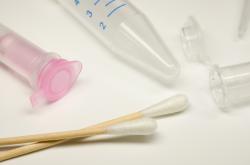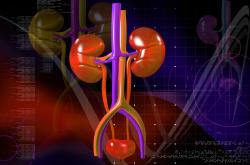Laboratory Tests for Adrenal Fatigue
Several laboratory tests can help to identify the presence of adrenal fatigue. Learn what these tests measure, the pros and cons of each test, and how to proceed to get the most accurate measurement of adrenal glands performance.

If you’ve been suffering from a variety of symptoms that have you wondering whether your adrenals are overtaxed or possibly damaged, take heart. While it can be frustrating to have doctors repeatedly insist that there is nothing seriously wrong with you, the fact is that new advancements in the study of the adrenals has resulted in new tests that can aid in your diagnosis. Here’s a look at the best laboratory tests for adrenal fatigue.
First, a caveat…
It is important to remember that many common tests that doctors rely on for diagnosing diseases are essentially useless for identifying this condition. That is because typical lab tests identify only extremely high or low levels of adrenal hormones – namely Cushing syndrome and Addison’s disease.
Adrenal fatigue is a malfunction of the adrenal glands that is not a recognized disease, so it takes an expert lab interpreter to read the results of standard exams and properly identify this syndrome. That fact, coupled with the medical community’s failure to recognize this condition for what it is, more often than not results in indeterminate results where no one identifies that the patient has an actual adrenal issue.
Tests That Can Help You Diagnoze Adrenal Fatigue
With that said, there are actual laboratory tests that can be useful for identifying the ailment. These tests are more accurate for detecting the subtler issues surrounding the adrenal glands, and thus differ greatly from standard lab tests that typically detect only the severest. They include:
- 24-Hour Urinary Cortisol Test
- Blood Tests, when properly interpreted
- ACTH Challenge Tests
- Saliva Hormone Testing
Each of these tests can be useful for detecting the presence of adrenal overload and fatigue.
24-Hour Urinary Cortisol Test
The 24-Hour Urinary Cortisol Test is, as its name suggests, designed to measure various types of hormones as they make their way into the urine. This includes the sex hormones, as well as corticosteroids and aldosterone. There are some benefits to be had from this test, as well as some noticeable limitations.
On the plus side, this can be an extremely beneficial way to detect the most severe cases of adrenal stress. The test is most accurate in detecting instances where a patient’s hormonal levels place them at the lower one-third of the normal range of output. For those patients whose symptoms also reflect stressed adrenals, the diagnosis can be considered fairly reliable.
At the same time, however, the manner of testing does make it difficult to obtain vital details about the ebb and flow of hormonal activity over the course of any day. This is due to the fact that all of the collected urine samples from that day are tested as one large sample. As a result, a person whose adrenal activity rises and falls throughout the day may test within the normal range, as those highs and lows balance out over that twenty-four hour period.
Blood Tests
These hormones can also be measured through blood tests, and these tests can be useful for providing information about the hormone levels within the patient’s blood. As with the urine test, this method does provide an incomplete picture of overall adrenal activity, since it reveals nothing about the levels of various hormones outside of the blood.
As a result, the blood test’s true usefulness is when it is used in combination with the urine test, as long as the results are being interpreted by a practitioner who has the experience needed to properly recognize the signs of adrenal stress.
ACTH Challenge Tests
An alternative type of blood test can also be used to identify this condition by testing the adrenals’ response to Adrenal Corticotrophic Hormone (ACTH). The process is a little more involved than a standard blood test, but can provide information that cannot be obtained through the standard examination.
This method involves first testing the amount of cortisol that the patient has coursing through his blood. ACTH or a similar substance is then injected into the blood to stimulate hormone output, and those results are then measured as well. By comparing the “before” and “after” measurements, it is possible to obtain a better understanding of the overall state of the adrenals.
Under normal circumstances, the cortisol levels in the blood will increase by 100% or more. When only a slight increase is detected – or no increase at all – it can indicate that the adrenals are not functioning properly. The benefits of this testing methodology can be increased by combining it with the 24-Hour Urinary Cortisol Test, with the latter being conducted both prior to and after the ACTH Challenge. When this process is used, a doubling of the cortisol levels from the first urinary test to the seconds will indicate the presence of adrenal fatigue.
Saliva Hormone Testing
The saliva test is considered the best option, since the hormones present in that bodily fluid are a better indicator of the actual hormone levels in the body’s various cells. This is a more accurate measurement than blood, which only provides measurements of hormones that are outside of the cells, or urine tests that detect only the hormones that leave the blood on the way to the urine. In addition to being more reliable indicators, saliva tests also have the benefit of being extremely simple to conduct, and far less expensive than other testing techniques.
This test requires only that you spit into a sample vial. There are no needles or other invasive techniques used in the testing process, which makes it a much more pleasant testing methodology for those who need to have their adrenal activity monitored over time. Most test regimens require patients to collect their saliva samples at least four times each day. One common approach is to collect a sample right after waking up, and then repeating the process at lunch, dinner, and right before going to bed. Those samples are then provided to a laboratory so that the cortisol levels can be measured. Because of the way the samples are spread out over a twenty-four hour period, the test results can provide information about the ebb and flow of those hormones over the course of any given day.
While testing for cortisol levels, other hormones can be measured as well to gain an even more complete picture of the current state of the patient’s adrenal glands.
Another advantage of this test is that you don’t always have to rely upon a potentially skeptical medical practitioner to have it performed. Many chiropractors and alternative medicine professionals can conduct the exam, and most are more qualified to interpret the results anyway.
The Bottom Line
It is important to note that the advantages of the saliva test do not in any way render the other tests ineffective. Each can be helpful in enabling a better understanding of exactly what your adrenal glands are doing. The optimal approach is to have all these tests conducted so that a full picture of your hormonal activity is provided. When that occurs, a practitioner with the right approach to interpreting the results can almost always reach the correct diagnosis.
If push comes to shove and there’s only one test that can be performed, however, always opt for the saliva exam. That test, in combination with a thorough examination of your reported symptoms and signs, remains your best option when it comes to detecting this ailment.
You might also be interested in:
- Adrenal Fatigue and Laboratory Testing. http://www.drlam.com/articles/adrenal_fatigue_and_laboratory_testing.asp
- Laboratory Testing For Adrenal Fatigue. http://healthylifedoctors.com/hormones/laboratory-testing-for-adrenal-fatigue.html
- Adrenal Fatigue Q&A. https://www.icahealth.com/common-adrenal-fatigue-qa#question-8
- Adrenal Fatigue | Adrenals and Naturopathic Diagnosis. http://www.whitelotusclinic.ca/adrenal-fatigue/















.jpg)




Leave a comment